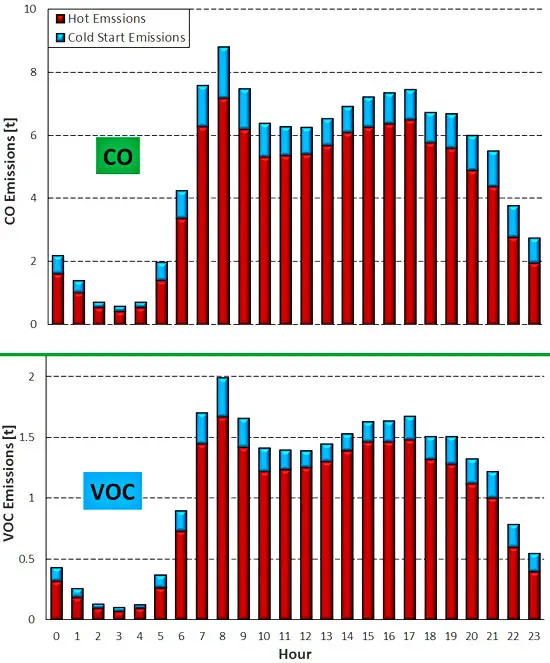
About
From the previous Monday till yesterday the 9th International Conference on Air Quality – Science and Application took place in Garmisch-Partenkirchen (Germany). I submitted a poster at this conference, which I would like to share it with you. The poster can be considered as the sequel of the COPERT Micro poster. In the paragraphs that follow you will find a text version of the poster, and, if you like, you can download the original version presented at the conference. I hope that you will find it interesting.
Introduction
- During cold-start, the exhaust emissions of regulated pollutants are high, since the engine, catalyst and drive train of the vehicle have not reached their regular operating temperatures.
- Considering that passenger cars are a major contributor to transport emissions we tried to quantify the impact of cold start emissions on a micro (per traffic link) and macro-level (entire city), using measured traffic data and applying traffic and emissions modeling.
- This study aims to quantify the contribution of cold start emissions on the overall road transport emissions in the road network of Athens, Greece.
Methodology

- Athens network used: 81880 links and 36725 nodes.
- The demand side comprised of 24 hourly Origin-Destination (OD) matrices which were corrected using hourly volume data measured by 557 inductive loop detectors installed across the city.
- The output traffic data from PTV VISUM (traffic volume, average speed, and vehicle fleet composition pet link), along with the trip length distribution, ambient temperature and parking time distribution of the entire city were inserted to COPERT Micro.
- COPERT Micro calculated both hot and cold start emissions per traffic link following an approach that combines COPERT 4 and ARTEMIS project, respectively.
Cold start results



Conclusions
- 18% and 15% of the daily total CO and VOC road transport emissions in Athens are due to cold start, whereas the corresponding percentage for NOx and CO2 emissions is 7% and 2% respectively.
- In specific traffic links, which are closer to locations where the majority of trips start, the contribution of cold start emissions is dominant, thus significantly affecting local air quality.
- Specific cold start allocation modeling activities to road networks have to be developed to correctly allocate the cold start impact, in particular for local hot-spots.
Downloads
The file is in PDF format.
Read also
COPERT Micro: A Tool To Calculate The Vehicle Emissions In Urban Areas

